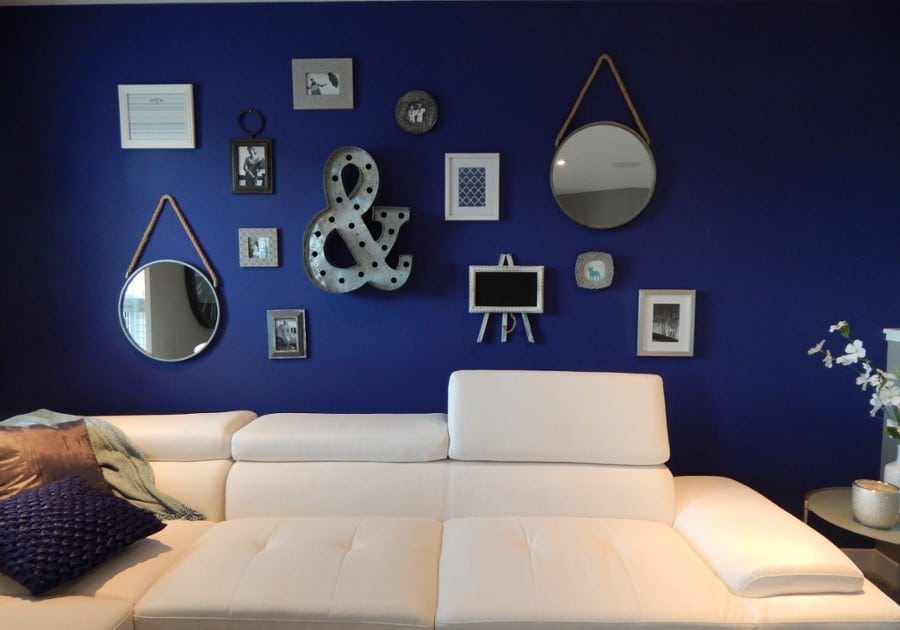Article written by Alberta Colour Painting in Calgary
Table of Contents
ToggleDIY – Joy or Frustration?
DIY is a big thing today. More and more people decide to elaborate ideas for the design of their apartment or house themselves and to get them done by themselves. Doing things yourself means getting customized solutions that are suitable for your special wishes, it means a more individual look, fewer expenses and a feeling of reward after your project is done and has turned out as expected. This is the best case.
The worst case is a complete failure during the planning or the realization of a DIY project. Often, people fail to inform themselves on the trade they want to use for their project, they lack the right equipment or the skills that are needed to successfully realize their project.
The Trend of DIY Interior Painting
A very common job that people often decide to get done by themselves is interior painting. Stores sell paint, painter’s rollers and covering foil. But does that automatically mean that interior painting is a great DIY project? While some people are successful in adding a new design to their living space, the majority is disappointed by the result because there are so many mistakes you can make when painting walls. That is why we would love to give you an overlook of the most common mistakes that you should avoid when painting.
The Most Common Mistakes In Interior Painting And How To Avoid Them
1. A Poor Choice Of Equipment
The first big mistake that many handymen make even before they start painting is choosing the wrong equipment. Make sure to pick high-quality tools for your paint job. This goes for the paint, of course. Check for coverage, advice on watering it down, and assure yourself that the composition of the paint is suitable for the wall structure and material that you want to paint. In order to apply the paint correctly, the choice of a suitable roller or brush is just as crucial. The quality argument goes for the rollers and brushes, too, as the ones of low quality may fuzz or lose hair. Even the most experienced painters will achieve poor results with low-quality painting equipment.
2. Negligence With Preparing The Surface
To achieve the best results, make sure to prepare the surface you want to paint. Free it from wallpaper, from old paint that peels off and from dust. Certain surfaces, like wood, for example, should be ground down a little in order to make them smooth and to open the pores. For most surfaces common in apartments and houses, you might even need a primer. The primer prepares your wall for providing a strong grip to the paint and acts as a layer of connection between the wall and the paint. If you do not use one on surfaces, where it is recommended, the first result may appear okay, but you might have to deal with peeling after only a short period of time.
3. A Lack Of Preparation
Another common mistake is negligence when it comes to the preparation of a paint job in an apartment or house. Sockets and light switches should be removed or thoroughly covered, nails or screws should be pulled out of the wall so as to avoid droplets of paint forming underneath them when painting. Use masking tape to seal off adjoining surfaces that should not be touched by the paint. For this, too, choose high quality, so that the tape sticks to the wall evenly.
Otherwise, you might end up having uneven transitions because the paint might run underparts of the tape.
Even though it might feel like the preparation is a lot more time-consuming than the paint job itself, do it thoroughly. Experienced painters know that proper preparation is the biggest part of the iceberg, without which the whole project stands or falls. The better your preparation, the easier the painting becomes. You will be able to focus on applying the paint instead of carefully painting around sockets or switches or instead of correcting mistakes due to poor preparation.
4. Leaving Out The Ceiling
An experienced interior painter always takes care of the ceiling. If you are about to paint your walls, make sure to paint the ceiling, too. As dirty particles from your fireplace or from cooking deposit up there, you might end up with nice walls in contrast to a yellowed ceiling. Even though you might not realize that beforehand, it can become obvious as soon as your walls have a nice and fresh look to them. Painting the ceiling after the walls are counterproductive, which is why you should take care of the ceiling before the rest of your interior paint job. Once the ceiling is done, you can move on to the walls without being scared of dripping into a surface that has just been painted.
5. Starting Out Wrong On The Wall
Many DIY interior painters believe that starting out with painting the big area of a wall is the key to a fast and good result. It is not. You should always take care of the corners and angles first. Painting around obstacles like masked-off sockets and light switches is crucial, too. If you prepare the harder parts with a brush first, you can finish with the rest of the wall and achieve a great result. Always keep in mind that the further you get in your painting process, the less time you will need for the single steps. If you do it another way, you might end up with an uneven or sloppy result that you don’t want in your living space.
6. Painting Wet In Dry
This point is extremely important in order to achieve a smooth result, especially when you are going for a colored wall. If you paint, always follow the wet-in-wet principle. But what does that mean? If the paint has already begun drying and you apply another block of paint beside it, you will end up with a visible contrast between these two parts of the wall. So make sure to apply paint from the top to the bottom of your wall and then blend it with the areas to the right and to the left, rolling it on the wall in a horizontal movement. That way, adjoining parts of the wall are blended and you don’t see a contrast between them. By varying your painting movement, you also reach every pore of the wall and achieve a result that is perfect from every angle and with a changing incidence of light.
If you realize that, even though you have tried to paint wet-in-wet, the result is not as good as expected, let the complete wall dry and have another go on the complete wall afterward. This time, try to paint wet-in-wet again. You should now be able to correct all the faulty spots.
Remember: Always paint wet-in-wet. If you need to paint the whole wall a second time, let it dry first.
7. Running Out Of Paint
If you run out of paint in the middle of a paint job, an imperfect result is almost guaranteed. Make sure beforehand that you purchase enough paint for at least one pass. If you need a second layer, you can buy more. But within the completion of one layer of paint on a wall, you should not take breaks in order to get replenishment. That way, you would not be able to follow the wet-in-wet rule and risk an uneven result.
8. Negligence Of The Follow-up
Many DIY painters of interior walls think the work is done as soon as the wall has a new look to it and a smooth appearance, which is not true. If you leave the masking tape on the wall for too long, you will ruin your perfect result when removing the tape as the paint has connected to it and will flake off the wall in the adjoining areas. Again, you risk uneven results and sloppy corners and angles – transitions to other surfaces or to sockets and switches will look bumpy. In order to avoid that, make sure to remove the tape as long as the paint is still wet enough.
Another important follow-up when painting is the removal of stains on your floor or furniture. Even if you have masked everything off properly, stains can happen. As long as you wipe them off when they are still wet, that is not a problem, though. If stains have dried, you have to scratch them off, which might harm surfaces. Your wall might look great now but you will still be unhappy about the overall result.
Conclusion On Mistakes In Interior Painting
As you can see, there are many possible mistakes when it comes to DIY interior painting. If you inform yourself thoroughly about your planned project, necessary equipment, and technique, you should be on the safe side. Good results are definitely possible if you avoid common mistakes. If you feel like DIY painting is not for you, have a professional painter get the job done for you.
Contact Alberta Colour Painting at www.albertacolourpainting.com!









